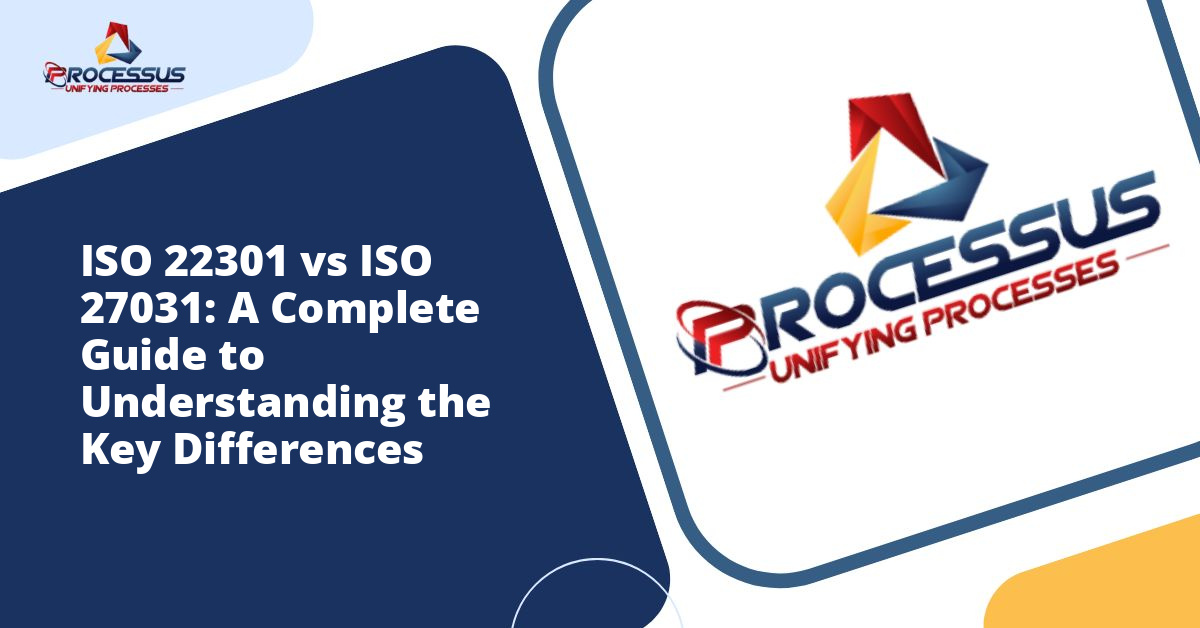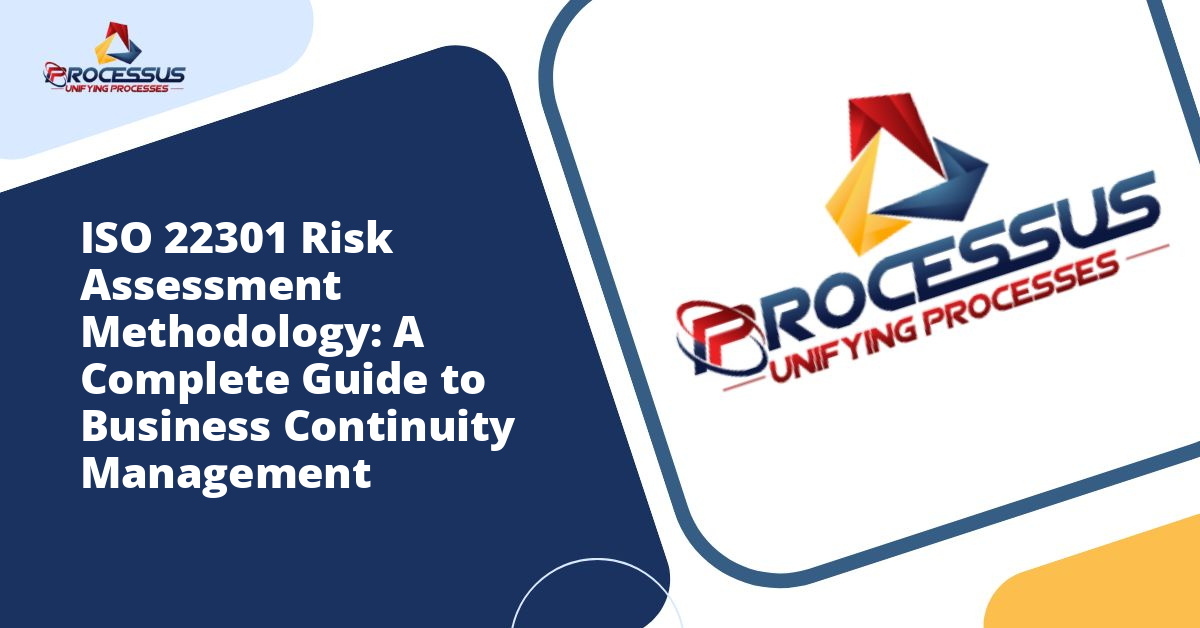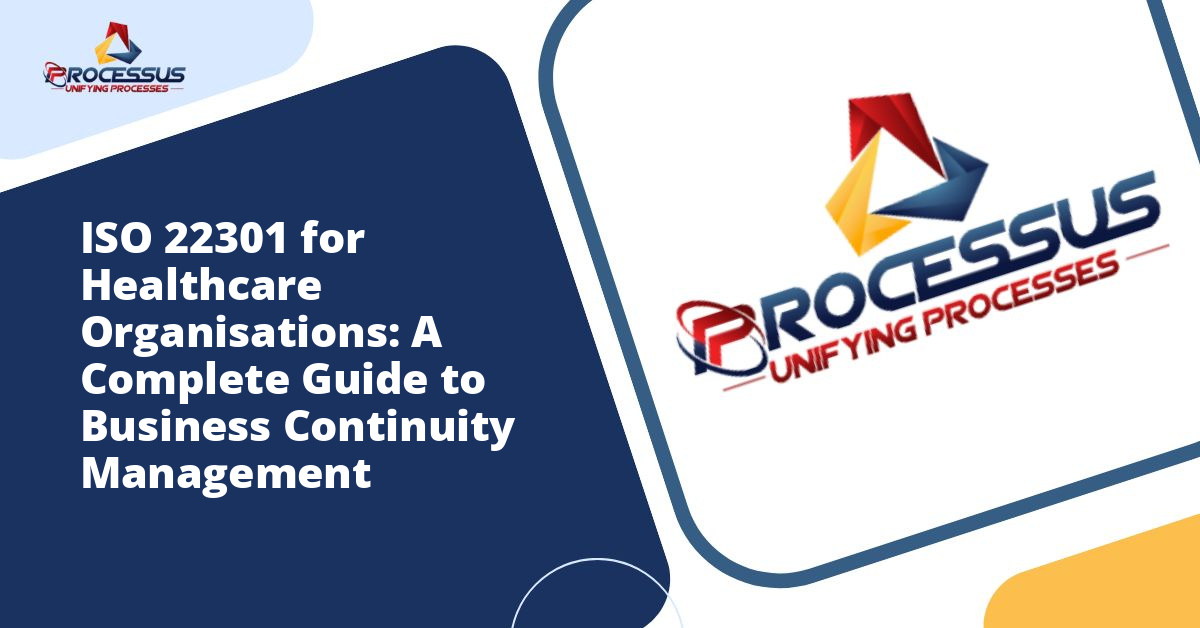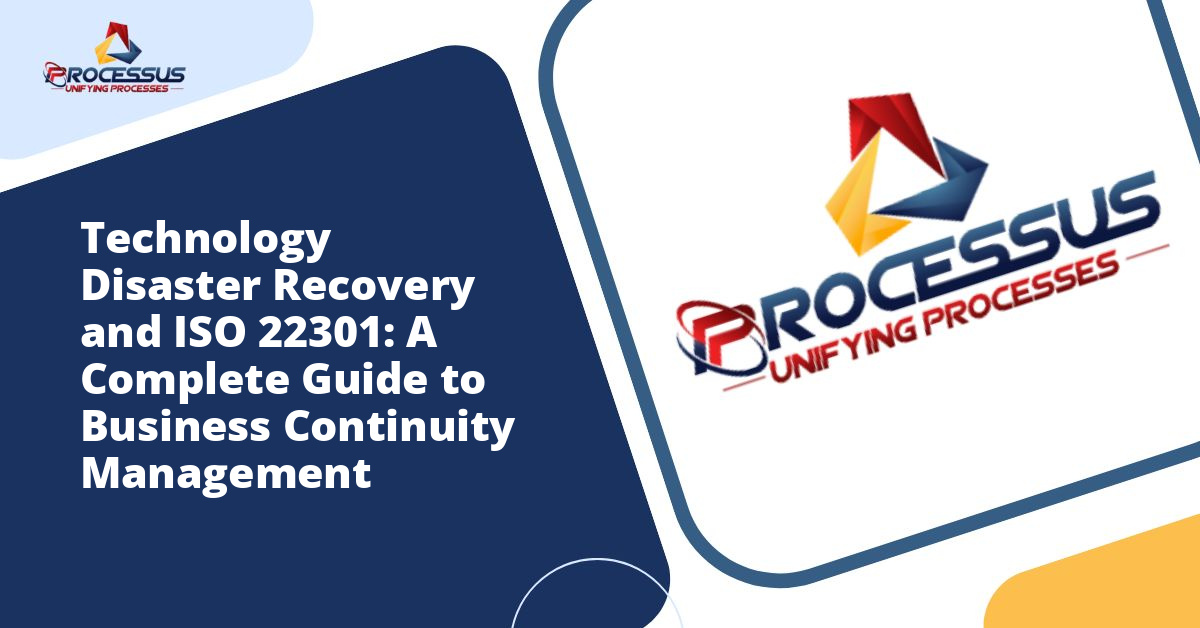In today’s interconnected business environment, organizations face numerous threats that can disrupt operations and compromise sensitive information. To address these challenges, international standards have been developed to help businesses prepare for, respond to, and recover from various incidents. Two such standards are ISO 22301 and ISO 27031, which often cause confusion due to their overlapping nature in business continuity and disaster recovery.
This comprehensive guide will explore the fundamental differences between these two critical standards, helping you determine which one is most appropriate for your organization’s needs, or whether implementing both would provide the most comprehensive protection. You might also enjoy reading about ISO 22301 Business Continuity Plan Development: A Complete Guide for Organizations.
Understanding ISO 22301: Business Continuity Management Systems
ISO 22301 is the international standard for Business Continuity Management Systems (BCMS). Published by the International Organization for Standardization, this standard provides a framework for organizations to prepare for, respond to, and recover from disruptive incidents that could affect their operations. You might also enjoy reading about Business Impact Analysis for ISO 22301 Compliance: A Complete Implementation Guide.
The Core Purpose of ISO 22301
The primary objective of ISO 22301 is to ensure that organizations can continue operating during and after a disruptive event. This standard takes a holistic approach to business continuity, addressing all aspects of an organization’s operations, not just information technology or cybersecurity concerns.
ISO 22301 helps organizations identify potential threats to their operations and provides a framework for building resilience. The standard ensures that businesses can maintain their critical functions during emergencies, minimizing downtime and protecting their reputation, assets, and stakeholder interests.
Key Components of ISO 22301
The ISO 22301 standard encompasses several critical elements that work together to create a robust business continuity management system:
- Context of the Organization: Understanding internal and external factors that could affect business continuity objectives
- Leadership and Commitment: Ensuring top management demonstrates commitment to the BCMS
- Planning: Establishing business continuity objectives and processes to achieve them
- Support: Providing necessary resources, competence, awareness, and communication channels
- Operation: Implementing and controlling the processes needed for business continuity
- Performance Evaluation: Monitoring, measuring, analyzing, and evaluating the BCMS
- Improvement: Continually improving the suitability, adequacy, and effectiveness of the BCMS
Who Should Implement ISO 22301?
ISO 22301 is suitable for organizations of all sizes and across all industries. Whether you operate a small local business or a multinational corporation, this standard provides scalable guidance for maintaining business continuity. It is particularly valuable for organizations that:
- Operate in high-risk environments or regions prone to natural disasters
- Provide critical services to customers or communities
- Must comply with regulatory requirements for business continuity
- Want to demonstrate their commitment to resilience to stakeholders
- Seek to minimize financial losses from operational disruptions
Understanding ISO 27031: ICT Readiness for Business Continuity
ISO 27031 is a more specialized standard that focuses specifically on Information and Communication Technology (ICT) readiness for business continuity. This standard provides guidelines for establishing and maintaining ICT services continuity during disruptions.
The Core Purpose of ISO 27031
While ISO 22301 addresses business continuity from a comprehensive organizational perspective, ISO 27031 zeros in on the technology infrastructure that supports business operations. In our digital age, most businesses depend heavily on their ICT systems, making this standard increasingly relevant.
ISO 27031 helps organizations ensure that their technology systems can continue functioning during disruptive events, or that they can be recovered quickly if they fail. This includes everything from servers and networks to applications and data storage systems.
Key Components of ISO 27031
ISO 27031 provides detailed guidance on several critical areas of ICT continuity:
- ICT Readiness: Preparing technology infrastructure to maintain operations during disruptions
- Service Continuity: Ensuring critical ICT services remain available to support business processes
- Recovery Planning: Developing strategies to restore ICT systems after an incident
- Testing and Exercising: Regularly validating that ICT continuity plans work as intended
- Integration with BCM: Aligning ICT continuity with broader business continuity management
Who Should Implement ISO 27031?
ISO 27031 is particularly relevant for organizations where technology plays a central role in operations. This includes:
- Technology companies and service providers
- Financial institutions that depend on digital systems
- Healthcare organizations with electronic health records
- E-commerce businesses operating primarily online
- Organizations with complex IT infrastructures
- Companies providing cloud services or hosting
Key Differences Between ISO 22301 and ISO 27031
Understanding the distinctions between these two standards is essential for making informed decisions about which to implement in your organization.
Scope and Focus
The most fundamental difference between ISO 22301 and ISO 27031 lies in their scope. ISO 22301 addresses business continuity from an enterprise-wide perspective, covering all aspects of operations including people, processes, facilities, supply chains, and technology. It takes a comprehensive view of organizational resilience.
In contrast, ISO 27031 has a narrower focus, concentrating specifically on ICT systems and how they support business continuity. It assumes that a broader business continuity strategy exists and provides detailed guidance on the technology component of that strategy.
Implementation Approach
ISO 22301 follows a management system approach, similar to other ISO management system standards like ISO 9001 for quality management or ISO 27001 for information security management. It establishes a framework for managing business continuity through policies, procedures, documentation, and continuous improvement processes.
ISO 27031, on the other hand, provides guidelines and best practices rather than establishing a certifiable management system. It offers technical guidance on implementing ICT continuity measures but does not prescribe a specific management structure.
Certification Potential
Organizations can pursue formal certification for ISO 22301 through accredited certification bodies. This certification demonstrates to customers, partners, and stakeholders that the organization has implemented a robust business continuity management system that meets international standards.
ISO 27031 does not offer formal certification. Instead, organizations use it as a reference guide to improve their ICT readiness for business continuity. While you cannot be certified to ISO 27031, you can claim compliance with its guidelines as part of your broader business continuity or information security program.
Risk Assessment Methodology
ISO 22301 requires organizations to conduct comprehensive Business Impact Analyses (BIA) and risk assessments that examine all potential threats to operations. This includes natural disasters, human errors, equipment failures, supply chain disruptions, and cybersecurity incidents.
ISO 27031 focuses risk assessment efforts specifically on ICT-related threats and vulnerabilities. It examines risks such as hardware failures, software bugs, network outages, cyberattacks, and data corruption, along with how these technical issues could impact business operations.
Recovery Objectives
Both standards address recovery objectives, but from different perspectives. ISO 22301 establishes Recovery Time Objectives (RTO) and Recovery Point Objectives (RPO) for business processes and functions. These objectives reflect how quickly the organization needs to restore various operations to maintain acceptable service levels.
ISO 27031 specifically defines ICT-related recovery objectives, focusing on the technical parameters needed to support business process recovery. It provides detailed guidance on determining appropriate recovery objectives for different ICT components based on their criticality to business operations.
How ISO 22301 and ISO 27031 Complement Each Other
Rather than viewing these standards as competing alternatives, organizations should understand how they work together to create comprehensive resilience.
Integrated Implementation
Many organizations find that implementing both standards provides the most effective protection. ISO 22301 establishes the overall business continuity management framework, while ISO 27031 provides detailed technical guidance for one of the most critical components of modern business operations.
When implemented together, ISO 22301 defines what needs to be protected and recovered from a business perspective, while ISO 27031 provides the technical roadmap for ensuring ICT systems can support those business requirements.
Supporting Documentation
Organizations implementing ISO 22301 can use ISO 27031 as a supporting document when developing their ICT continuity plans. The detailed technical guidance in ISO 27031 helps fill gaps that might exist in a more general business continuity management system.
Stakeholder Communication
Having both standards in place demonstrates a comprehensive approach to resilience. ISO 22301 certification shows stakeholders that you have a robust, independently verified business continuity program, while compliance with ISO 27031 demonstrates technical sophistication in protecting critical ICT infrastructure.
Choosing Between ISO 22301 and ISO 27031
Deciding which standard to implement depends on several factors specific to your organization.
Organizational Maturity
If your organization is just beginning its business continuity journey, ISO 22301 typically provides a better starting point. It helps establish the foundational elements of business continuity management that can later be enhanced with more specific technical guidance from ISO 27031.
Organizations with mature business continuity programs looking to strengthen their technology resilience might find ISO 27031 provides the specialized guidance they need to take their ICT continuity to the next level.
Industry Requirements
Some industries face regulatory requirements that specifically mandate business continuity management systems, making ISO 22301 certification necessary for compliance. Financial services, healthcare, and critical infrastructure sectors often have such requirements.
Technology-focused industries might find ISO 27031 more immediately relevant, though implementing the broader ISO 22301 framework would still provide significant value.
Resource Availability
Implementing ISO 22301 typically requires significant resources across the organization, as it affects all business functions. Organizations must commit leadership attention, staff time, and financial resources to build and maintain a comprehensive BCMS.
ISO 27031 implementation can be more focused, primarily involving IT and security teams. However, it still requires coordination with business units to understand their ICT requirements and ensure alignment with business objectives.
Business Objectives
Consider what you hope to achieve through implementation. If your goal is to demonstrate organizational resilience to customers and partners, ISO 22301 certification provides third-party validation. If your primary concern is ensuring technology systems remain available during disruptions, ISO 27031 provides more targeted guidance.
Implementation Best Practices
Regardless of which standard you choose, certain best practices can help ensure successful implementation.
Secure Leadership Buy-In
Both standards require commitment from top management. Leaders must understand the value of business continuity and ICT resilience, allocate appropriate resources, and actively champion the program throughout the organization.
Conduct Thorough Assessments
Take time to properly assess your organization’s risks, critical processes, and recovery requirements. Rushing through these foundational steps can result in plans that fail when needed most.
Engage Stakeholders
Involve representatives from all relevant departments in the planning process. Business continuity and ICT continuity affect the entire organization, and successful plans require input from diverse perspectives.
Test Regularly
Both standards emphasize the importance of testing and exercising plans. Regular tests reveal gaps and weaknesses that can be addressed before a real incident occurs. Make testing an ongoing priority rather than a one-time event.
Maintain Documentation
Proper documentation is essential for both standards. Keep plans current, document changes to processes and systems, and maintain records of tests, incidents, and improvements.
Foster a Culture of Resilience
The most effective business continuity and ICT continuity programs become part of organizational culture. Encourage employees at all levels to think about resilience and contribute ideas for improvement.
The Future of Business Continuity Standards
As technology continues to evolve and new threats emerge, both ISO 22301 and ISO 27031 will continue to develop. Organizations should stay informed about updates to these standards and emerging best practices in business continuity and ICT resilience.
The increasing interconnection between technology and business operations means that the boundaries between general business continuity and ICT continuity continue to blur. Future revisions of these standards will likely reflect this evolving relationship.
Conclusion
ISO 22301 and ISO 27031 serve different but complementary purposes in helping organizations maintain resilience. ISO 22301 provides a comprehensive framework for managing business continuity across the entire organization, while ISO 27031 offers specialized guidance for ensuring ICT systems can support business continuity objectives.
Rather than choosing one over the other, many organizations benefit from implementing both standards, using ISO 22301 as the overarching business continuity management system and ISO 27031 as detailed technical guidance for the ICT component.
Understanding the differences between these standards allows you to make informed decisions about which approach best serves your organization’s needs, resources, and objectives. Whether you implement one or both, these international standards provide valuable frameworks for building resilience in an increasingly uncertain business environment.
The investment in business continuity and ICT continuity pays dividends not only when disasters strike but also in the day-to-day confidence that comes from knowing your organization is prepared to face whatever challenges emerge.







